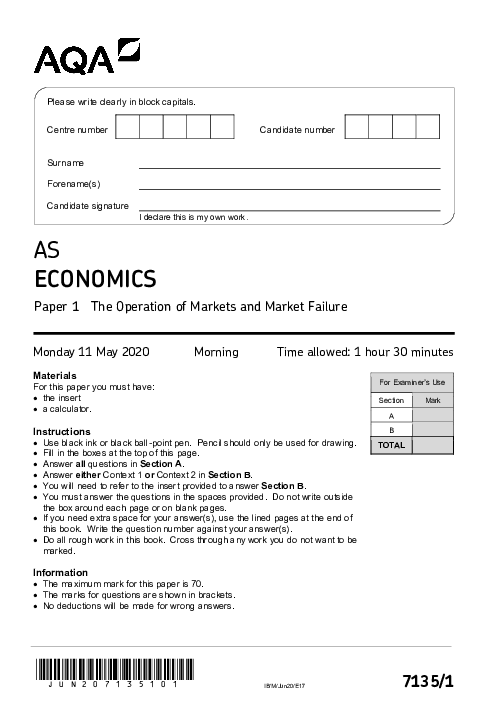Economics 7135/1 June 2020
omer uner
The exam evaluates microeconomic principles, market efficiency, and government interventions. Topics include price elasticity, externalities, economies of scale, and production possibility frontiers. Analytical tasks address market equilibrium, the impact of subsidies, and tax implications. Section B examines contextual applications, such as free bus travel for the elderly and the regulation of e-cigarettes, focusing on social costs, demand changes, and subsidy effects. Quantitative reasoning involves elasticity calculations, median comparisons, and supply-demand diagrams. The exam emphasizes evaluating market failures, public policy impacts, and the balance between economic efficiency and equity in real-world scenarios.
See More Paper 1 a year ago
Economics (7135) Subject directory
All resources in one place
Related Past Papers
Related Tutorials
Crash report

